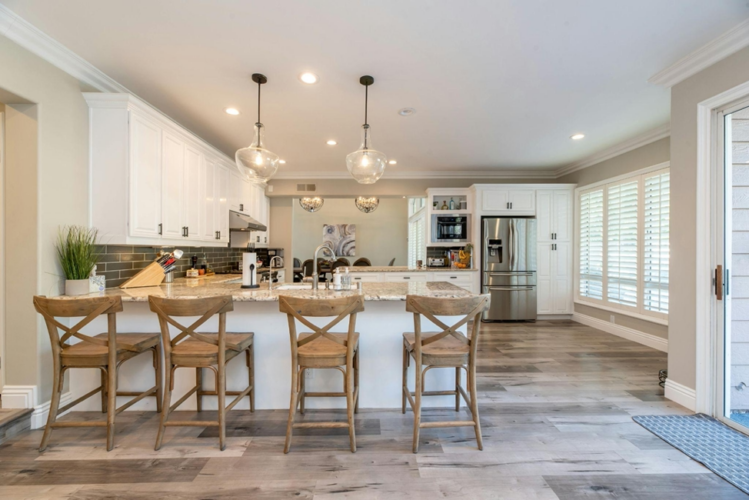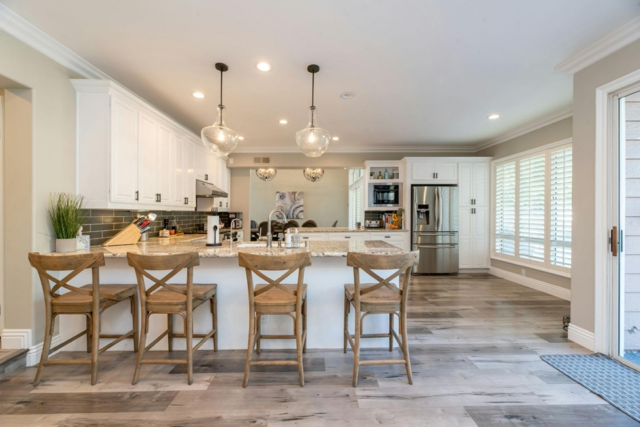The House That Heals: How Your Home Shapes Your Health — And How to Fix It
There’s a version of your home that’s quietly either nourishing your well-being or chipping away at it, one subtle influence at a time. It’s not just about air purifiers or tossing a few houseplants into the mix. It’s in the way your bedroom lighting triggers your brain, or how your furniture layout impacts your posture over a Zoom call. If you’ve ever walked into a space and instantly felt either calm or tense, you already know your surroundings have a say in how your body and mind operate. But what’s easy to overlook is just how deeply our homes act as co-authors in our daily health story—and how making them allies instead of adversaries doesn’t require a gut renovation.
The Hidden Language of Light and Circadian Rhythm
You may not notice it until your sleep’s off or your mood dips, but the lighting in your home is in constant dialogue with your biology. Blue light, especially the kind beaming from LED bulbs and screens, can sabotage your circadian rhythm if it floods your evenings. And yet, too little natural light during the day can leave your body confused about what time it is and how to behave. You want your space to mimic the sky’s shifts—cooler, brighter light in the morning and warmer, dimmer tones as the sun winds down. The simple act of switching bulbs and pulling open curtains in the morning becomes a quiet revolution in your sleep hygiene.
The Air You Breathe Is Talking Back
You’d be surprised how often health hazards start with a slow drip behind a wall. Left unchecked, even minor plumbing leaks can quietly birth mold colonies or weaken drywall, polluting the air you breathe and inviting long-term structural headaches. That’s why routine plumbing inspections should sit right alongside your seasonal HVAC checks or smoke detector tests—it’s part of the architecture of staying well. With smart tools now at your fingertips, chatting with a plumber through a dedicated app means you can jump on a quick video call the moment you notice something off, get expert advice without the wait, and even line up trusted, local professionals when in-home repairs are unavoidable.
Acoustics That Steal Your Sanity
You’ve probably underestimated how noise pollution creeps in and quietly destabilizes your nervous system. Whether it’s the hum of appliances, street noise sneaking through old windows, or the constant drone of electronics, your brain doesn’t fully clock out when surrounded by low-level noise. Over time, this dull roar can elevate cortisol levels, interrupt concentration, and wear down your sleep cycles. Use textiles—curtains, rugs, upholstered furniture—to absorb the excess. Even rearranging a bookshelf to cover a thin wall can muffle your world back into a state of calm.
Furniture That Shapes Your Frame
Look around at your favorite chair or the spot you settle into every night, and ask yourself if it’s giving your spine a fair deal. Most people bend their bodies to fit the room instead of designing their rooms to support the body. Long-term, that creates tension patterns, joint stress, and chronic back pain that creeps into your daily life. Look for ergonomic furniture not just for work but also for rest, and when you can’t upgrade, supplement—lumbar pillows, laptop stands, or even a stool under your feet to keep your posture honest.
Materials That Don’t Lie
Not all surfaces are created equal, and some are harboring bacteria like it’s their full-time job. Porous countertops, mystery fabrics on vintage chairs, and dusty carpeting can become health hazards before you ever suspect them. You’re better off with materials that clean easily, don’t trap allergens, and can withstand frequent disinfecting without degrading. It’s not about chasing a sterile lab vibe—it’s about choosing finishes that actually help you maintain a clean baseline without extra effort.
Clutter as a Cognitive Load
There’s a reason your shoulders tense up in a messy room. Visual clutter functions like noise—it overloads your mind with micro-decisions and distractions, hijacking your ability to focus or relax. You don’t need a minimalist Instagram aesthetic, but you do need a space that gives your brain room to breathe. Curate instead of accumulate, and give every object a home, especially the ones that usually live in that dreaded “junk drawer” purgatory. You already know how much a bad hotel room can ruin your mood or how a cozy cabin can restore you overnight. Your home is just a long-term version of that influence. It’s where your habits form, where your body rests, where your nervous system recalibrates—and ignoring the subtleties of its design is like expecting a garden to thrive without checking the soil.

Dive into the rich tapestry of art, culture, and history with FORM-Idea, your multilingual gateway to insightful stories and diverse perspectives from around the globe.












